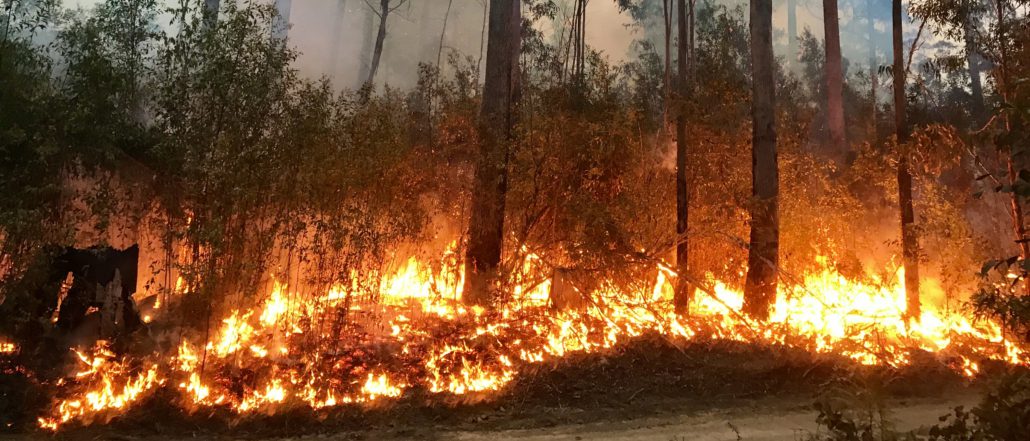Key tips to prepare your business for wildfires

3 minute read
In 2021, severe weather caused $2.1 billion in insured catastrophic losses in Canada, according to the Insurance Bureau of Canada (IBC). While there are many types of severe weather, wildfires are especially costly. For example, in 2021, there were two wildfires — in Lytton and White Rock Lake, B.C. — with a combined insured loss of $179 million.
Most wildfires occur between April and September in Canada, particularly in Canada’s forests and grasslands. An average of 8,000 wildfires a year burn 2.5 million hectares, according to the Canadian Red Cross.
It has been predicted in a federal climate change report that extreme heat will become more frequent and intense, which will increase the severity of heatwaves, droughts, and wildfire risks. Drier conditions in Canadian forests and grasslands may seem harmless, but with an increase in summer lightning incidences, it can lead to wildfires.
How wildfires impact businesses:
A wildfire could be blazing over a kilometre away, but buildings and structures are still at risk of sustaining significant damage from it, even if it’s not that close by. The reason? Burning embers can get carried by winds, and if there is flammable material near the property (dry plant matter), the risk is heightened.
While fire damage is a primary concern, there are other wildfire-related complications that can impact a business, including evacuation and shutdown orders, business interruption due to lack of access and damage to critical infrastructure such as power lines. Business owners may also suffer a loss in income if their business is shut down while rebuilding after a fire.
Steps businesses can take to be prepared for wildfires
Creating a wildfire action plan can help minimize the negative impact and damages that occur due to a wildfire. Here are some things to consider before, during, and after a wildfire:
Before wildfire season starts:
Failure to plan is a plan to fail. A wildfire response plan should be created and made accessible to all employees. The plan should include the following:
Multiple evacuation routes
Designated meeting area
Communication plan
Emergency contact information
If the business has any employees, it may be beneficial to have practice drills to ensure they know how to respond in the event of a wildfire and get them familiar with evacuation routes.
Having a wildfire action plan can help employees stay safe and increase the chances that a property will survive.
Prepare business property for the wildfire season
Take a look around at what combustibles may be on the property, such as debris, wooden fencing, and structures being used for storage.
The National Fire Protection Association (NFPA) standards advises maintaining a minimum of 10 metres between buildings (as well as vehicles, fuel tanks, and outside storage areas) and high grass or wooded areas. If there are coniferous trees, such as pine and fir, the safety zone should be at least 30 metres.
Clear deadfall and trimmings from open spaces and away from all buildings, especially if they are on a slope. Trees should be trimmed regularly, so that branches are not near the ground. Roofs and eavestroughs should also be cleared of leaves, branches, pine needles, and other debris that could fuel a fire.
Store combustible and flammable materials in approved containers at an acceptable distance from buildings, fences, and vehicles. Consult your local authorities for specific laws and requirements.
During a wildfire event
If a wildfire is burning in your region, tune into local news stations for evacuation notices and other directions from local authorities. Set up critical alerts for your area, using Alert Ready.
Actions that can be taken to help secure your business include the following:
Close windows and doors and shut down building air intakes to limit exposure to smoke and dust.
Turn off air conditioning, electricity, and gas services, as well as backup generators.
Cover vents, windows, and other openings with duct tape and plywood.
Use a sprinkler/hose to soak the roof and property (unless local authorities have restricted water use).
After a wildfire event
If a building or property needs to be restored or rebuilt after a fire, it would be practical to consider using fire-resistant materials. Using materials that are non-combustible such as metal, instead of wood could be something to keep in mind. Even choosing certain types of roofing, siding, doors, and windows can makes a difference, as they may have a higher fire-resistance rating.
Do you have the insurance your business needs?
Due to climate change, catastrophic weather events (like wildfires) are expected to increase over the coming years. Having a business wildfire plan for your small business can go a long way in helping to mitigate damage and keep you and your employees safe.
Learn more about the types of business insurance your company may need, or request a quote today.
This blog is provided for information only and is not a substitute for professional advice. We make no representations or warranties regarding the accuracy or completeness of the information and will not be responsible for any loss arising out of reliance on the information. Terms, conditions and exclusions apply to coverage. See policy for details.






